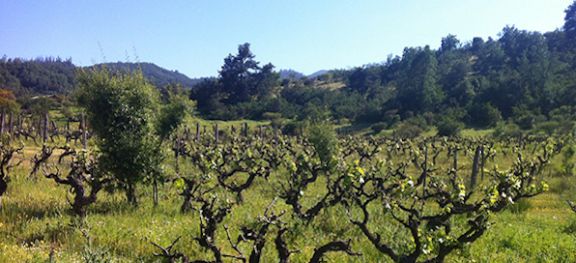A call to rescue Chile's finer Muscat


Maximiliano Morales of Andes Wines reports that Chile may be about to lose the superior Muscat variety that has been grown for over 150 years in the Valparaiso region.
Although the region of Valparaiso is known internationally today for Sauvignon Blanc, Chardonnay and Pinot Noir from the Casablanca, Leyda and San Antonio valleys, almost extinct vineyards of the Frontignan (small-berried Muscat Blanc) vine variety can be found in the Quilpue area, near the Marga Marga River and 30 minutes from the city of Casablanca, in one of the oldest regions in Chile. Most Moscato vines in Chile, widely used for the local pisco spirit, are the less fine Moscatel de Alejandria (Muscat of Alexandria) variety.
The variety known as Frontignan in Chile, known more usually as Muscat Blanc à Petits Grains in France, was spread throughout France, Germany and Italy and was brought to Chile by the Spanish people and missionaries who settled in Quilpue. Over the years, many of these vines were pulled out because of the low price of the grapes and their distance from most consumers, leaving just a few hectares that have lost their competitiveness despite having produced wine for over 150 years.
So far the Chilean wine industry has not been able to rescue this historic variety that is nearly extinct in Chile, so a group of winemakers, led by Andes Wines, began raising awareness of the Frontignan farmers in the area, particularly among state institutions, with the aim of rescuing it.
If the wine industry could save this variety, the future of the sacramental wine such as the Muscat of Frontignan currently produced and exported by only one producer, Livorio Ponce of Los Coligües winery and marketed in Belgium, would be assured. The Belgians may treasure this sweet wine but there is little interest elsewhere because there are so few hectares of the variety.
Andes Wines argue in favour of a product that is sustainable over time and that also helps farmers to increase their income by selling grapes. It should be created, they say, ‘through a technology transfer initiative put in place to standardise the handling and winemaking, aside from spreading and replanting the vines in other sectors with farmers who are interested in growing grapes again because of potential buyers'.
They admit, however, that the attractiveness of the grapes to the local bird population can result in crop losses of up to 50% in the few remaining hectares.
In their research into the history of Chilean Frontignan, Andes Wines contacted Felipe de Solminihac, the renowned winemaker and partner with Paul Pontallier of Ch Margaux and Bruno Prats in the Aquitania winery. He confirmed that he worked in the Marga Marga area between 1975 and 1976, while traveling with his mentor Mario Espinoza Scheurich, father of Alvaro Espinoza of Viña Antiyal and oenologist of Viña Emiliana.
According to Felipe de Solminihac, they worked then with the Marga Marga co-op, which owned no fewer than three wineries as a result of the agrarian reform process, Retuca, Quillayes and Los Perales. The last was the most traditional in its architecture and construction and the place where the reserve wines were produced.
Viña Los Perales emerged in 1851, when Pedro Maria Riesco sold Fundo Los Perales to Father José Magloire Doumer of the Sacred Hearts Congregation. Eight years later the construction of the buildings, including a chapel with stained-glass windows, began. The stone buildings were suitable for wine ageing and they still stand today. They have been able to maintain the cellar, church and place just like old times (see below) with a powerful atmosphere. What is lacking are sufficient vines.


In 1859, agricultural work increased since the soil and climate were suitable for growing grapes. The Muscat of Frontignan variety was brought directly from France, and years later produced a renowned sweet wine sold in the region’s churches.
Solminihac reports that the Frontignan grapes are very aromatic and thinner-skinned than other Muscat varieties. It has a relatively low yield, which makes it finer and more intense, but is very sensitive to fungal diseases and viruses such as court noué. It buds early compared with other Muscats.
‘We must preserve and improve this strain which can produce sparkling wines; in fact in Italy it is recommended for Asti sparkling wine, besides being able to produce late-harvest sweet wines from mature grapes', Felipe de Solminihac argued to Andes Wines.
Become a member to view this article and thousands more!
- 15,401 featured articles
- 274,903 wine reviews
- Maps from The World Atlas of Wine, 8th edition (RRP £50)
- The Oxford Companion to Wine, 5th edition (RRP £50)
- Members’ forum
- 15,401 featured articles
- 274,903 wine reviews
- Maps from The World Atlas of Wine, 8th edition (RRP £50)
- The Oxford Companion to Wine, 5th edition (RRP £50)
- Members’ forum
- Commercial use of our Tasting Notes